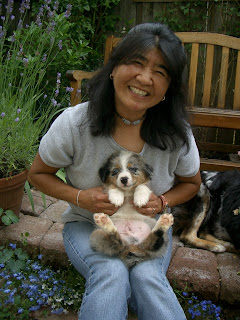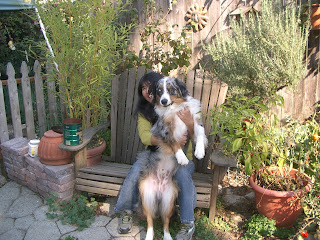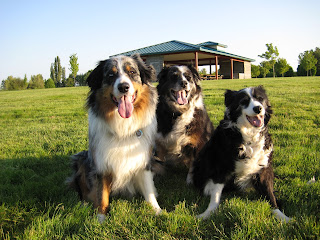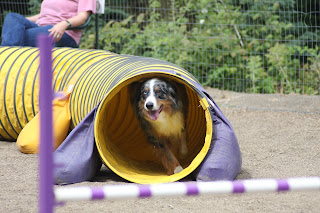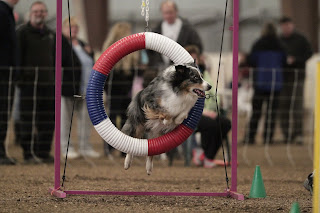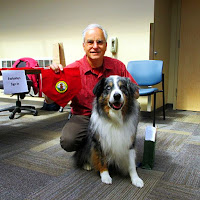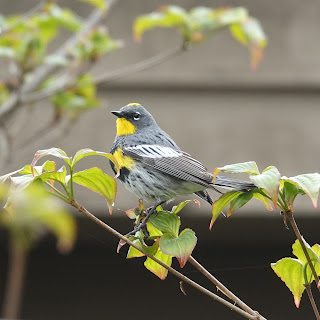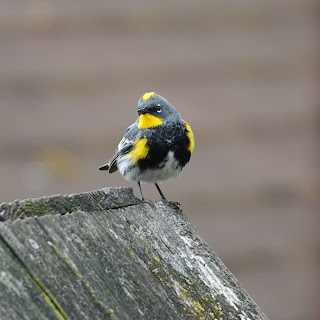- Killing Crazy Horse: The Merciless Indian Wars in America - Author: Bill O’Reilly & Robert Petkoff
- The Big Burn: Teddy Roosevelt and the Fire That Saved America - Author: Timothy Egan
- Too Much and Never Enough: How My Family Created the World’s Most Dangerous Man - Author: Mary L. Trump PhD
- The Demon-Haunted World: Science As A Candle In The Dark - Author: Carl Sagan
- Nine Years Among the Indians - Author: Herman Lehman
- Short Nights of the Shadow Catcher - The Epic Life and Immortal Photographs of Edward Curtis
- A People’s History of the United States - Author: Jeff Zinn
- The Water Dancer - Author: Ta-Nehisi Coates
- The Body - Author: Bill Bryson
- Pilgrimage to Eternity: From Canterbury to Rome in Search of a Faith - Author: Timothy Egan
- Thanks, Obama - My Hopey, Changey White House Years - Author: David Litt
- A Very Stable Genius: Donald J. Trump's Testing of America - Author: Phillip Rucker & Carol Leonnig
- A Passion for Nature: The Life of John Muir - Author: Donald Worster
- Bill Bryson's Appliance of Science - Author: Bill Bryson
Thursday, December 31, 2020
Book Reading List - 2020
Monday, December 21, 2020
Winter Solstice - Haiku
This Winter Solstice •
Shortest day and longest night •
Of the darkest year
This winter solstice will also mark the great conjunction when Jupiter and Saturn will be conspicuous in the western sky just after sunset and will be only 0.1 degree apart at the exact moment of the conjunction. Astronomers use the word conjunction to describe meetings of planets and other objects on our sky’s dome. They use the term great conjunction to describe meetings of Jupiter and Saturn, which are the two biggest worlds in our solar system. Though the two planets will appear spectacularly close together on the sky’s dome now, Jupiter and Saturn are actually 456 million miles (733.9 million km) apart. Saturn is nearly twice as far away as Jupiter.
Jupiter-Saturn conjunctions happen every 20 years; the last one was in the year 2000. But these conjunctions aren’t all equal. The 2020 great conjunction of Jupiter and Saturn will be the closest since 1623 and the closest observable since 1226! 2020’s extra-close Jupiter-Saturn conjunction won’t be matched again until the Jupiter-Saturn conjunction of March 15, 2080.
Source: EarthSky.org
Labels:
Environment,
Haiku,
Poem,
Solstice,
Winter Solstice
Location:
Vancouver, WA, USA
Friday, July 17, 2020
Astronomy - Comet NEOWISE
Last night’s second attempt to photograph comet NEOWISE was a bit more successful. Thankfully the cloud bank on the horizon didn’t block the view and nicely added a little perspective showing how small the comet actually appears in the sky.
Note: Photos taken with a Sony DSC-RX10M4, 24 - 600 mm lens, ISO 5000
Labels:
Sky; Astronomy
Location:
Vancouver, WA, USA
Saturday, July 11, 2020
Birds - Tree Swallow
 |
| Tree Swallow (Tachycineta bicolor) |
Found these Tree Swallows at my new favorite birding spot, Shillapoo Wildlife Recreation Area in SW Washington. Tree Swallow (Tachycineta bicolor) occur from Alaska east through southern Nunavut to Newfoundland and south to California, northern Arizona, Texas, and Georgia. Fun fact: A group of tree swallows are known as a "stand" of swallows.
 |
| Tree Swallow (Tachycineta bicolor) |
Labels:
Birding,
Birds,
CouveCritters,
Environment,
Nature,
PNW,
Wildlife
Location:
Shillapoo Lake, Washington 98660, USA
Saturday, June 27, 2020
Birds - Redhead
 |
| Redhead (Aythya americana) |
Just recently discovered a really cool birding spot near Vancouver Lake called Shillapoo Wildlife Recreation Area. It's an ephemeral wetland area that, right now has an amazing amount of waterfowl and song birds. This week I was able to add a Redhead duck to my life list. Redhead (Aythya americana) are not common here in the PNW and would normally be found in their northern or inland breeding grounds this time of year. It looked like there were some younger Redhead with the adults so it's not clear what they were up to.
Labels:
Birding,
Birds,
CouveCritters,
Environment,
Nature,
PNW,
Wildlife
Location:
Shillapoo Lake, Washington 98660, USA
Birds - Common Yellowthroat
As the name suggests, Common Yellowthroat (Geothlypis trichas) are a common warbler found in practically every marsh, reed-bed and patch of cattails from coast to coast. Despite that, I feel lucky to have photographed this male and female hiding in the grass at Shillapoo Wildlife Refuge Area. According to allaboutbirds.org, Common Yellowthroats are easy to find during spring and summer in much of North America. Just visit open habitats such as marshes, wetland edges, and brushy fields and listen for the male’s wichety-wichety-wichety song. If you don’t spot one after a while, try making a “pishing” sound; yellowthroats are inquisitive birds and often pop into the open to see who’s making the sound.
 |
| Common Yellowthroat (Geothlypis trichas) female |
Location:
Shillapoo Lake, Washington 98660, USA
Friday, June 26, 2020
Road Trip - Seaside, OR
 |
| Tillamock Head, Seaside, OR |
 |
| Tillamock Head, Seaside, OR |
Clamming season here closes from July 15 - September 30 but the best time to do it is at low tide which might have explained why there were clammers everywhere.
I don't usually pay much attention to seagulls because they're kind of hard to ID. Luckily that didn't deter me this time and I was able to photograph and add Glaucous-winged Gull (Larus glaucescens) to my life list.  |
| Glaucous-winged Gull |
Location:
Seaside, OR 97138, USA
Tuesday, June 16, 2020
Birds - House Wren
I’ve seen a lot of House Wren (Troglodytes aedon) at Vancouver Lake Park but this is the first time I’ve seen one with a nest hole full of babies. I must have taken at least 100 photos before I was able to get this one with the momma and her babies with their mouths wide open.
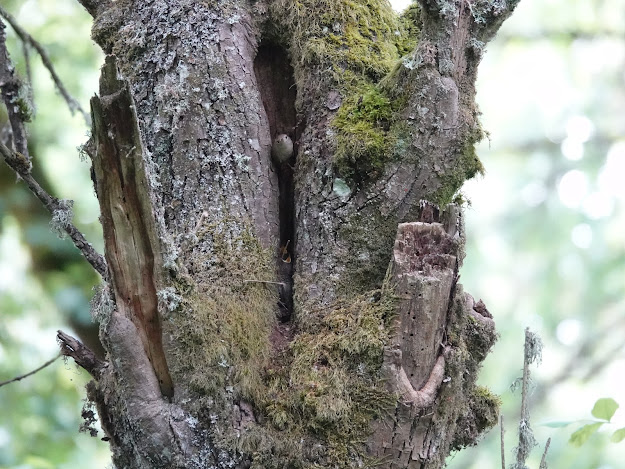 |
| House Wren (Troglodytes aedon) nest with mother and babies |
Thursday, June 11, 2020
Birds - Red -Breasted Sapsucker
Discovered two nest cavities with Red-breasted Sapsuckers (Sphyrapicus ruber) on the west Vancouver Lake Park trail. Both had babies that could be heard from several hundred feet away. I lucked out with the above photo and caught the momma giving stink-eye to her baby who was sticking its head out begging for food right after she just got done feeding it. Sapsuckers get their name from eating sap in holes they drill in trees. They also eat insects attracted to the sap and sometimes catch insects in flight and eat seeds and berries.
 |
| Red-Breasted Sapsucker (Sphyrapicus ruber) |
Monday, April 27, 2020
Hobie Dawg - Best Dog Ever
It is with great sadness I have to say we recently said goodbye to our beloved Hobie Dawg. We are heartbroken. I can honestly say, I have never known a better dog who was as intelligent, faithful and loving as Hobie. He was a once in a lifetime pooch and was such an integral part of our lives. We knew this day was coming but it is still very hard. We feel extremely fortunate to have so many happy memories with him. He will be in our hearts forever.
Hobie would have been 15 years old this May 18, 2020. We found him in a newspaper ad when he was just a few weeks old and with little deliberation, picked him from a litter of 8 gorgeous pure-bred Australian Shepherd puppies.
Hobie fit right in with our pack of two dogs and two cats and quickly became leader of the pack (including us). He was always willing to please and a constant source of joy and entertainment. Australian Shepherds are known for their intelligence and Hobie was no exception. Training him was a breeze. He literally learned every trick in the book and many that aren’t.
His ability to catch frisbees on the fly or chase balls was incredible. Taking him on walks, going to the park or hiking the many local trails was always a delight. Invariably, when we took him on walks, people would stop us and ask if they could pet him or just tell us what a beautiful and amazing dog he was. I can’t tell you how many times people on the street or driving by would just yell out “I love your dog!” or “Your dog is beautiful!”
One of my goals when we were looking for another dog was to find one that I could do dog agility with. I knew Australian Shepherds excelled at dog agility and I loved the breed. So, that was what I was looking for. I had never done dog agility. So, I bought a bunch of books and began trying to learn the rules. I setup obstacles such as jumps and weave poles in our backyard where Hobie and I could practice.
Eventually, I found a dog agility training class at a local doggy day care where we began taking classes once a week. Hobie’s eagerness to learn and fearlessness was amazing. He never hesitated; even on the scariest obstacles like the teeter-totter, A-frame, raised walkway, or tunnels.
After a while, we joined a local group called CAT (Cascade Agility Group) where Hobie and I took classes once a week running agility courses in a big old barn on the south side of Portland. Hobie quickly advanced beyond the classes CAT offered. So, I found a private trainer nearby where we took classes and practiced agility once a week.
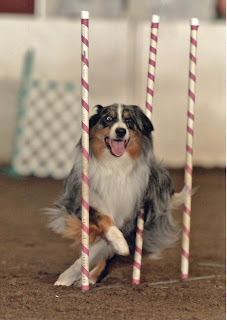
Finally, when I felt we were ready, I entered Hobie into an actual dog agility competition. I will never forget how intimidating it was running our first agility course competition. The thing that really amazed me though was how unflappable and natural Hobie was from the very start. Hobie was a natural and within a few years, earned all of the American Kennel Club (AKC) Excellent agility titles and Australian Shepherd Club of America (ASCA) Elite agility titles.
In his later years, Hobie also became a certified Animal Assisted Therapy dog which allowed him to go to hospitals or senior centers to help people in recovery or with disabilities such as PTSD or Alzheimer’s.
As you might have suspected, Carol and I are a just wee a bit dog crazy. Together I think we’ve owned over twelve dogs and I know there will be many more to come. Hobie was special though and will always hold a very special place in our hearts. We will miss him very much and will always cherish the time we shared together.
"Having a dog will bless you with the best days of your life and one of the worst days.” – Anonymous
Hobie would have been 15 years old this May 18, 2020. We found him in a newspaper ad when he was just a few weeks old and with little deliberation, picked him from a litter of 8 gorgeous pure-bred Australian Shepherd puppies.
Hobie fit right in with our pack of two dogs and two cats and quickly became leader of the pack (including us). He was always willing to please and a constant source of joy and entertainment. Australian Shepherds are known for their intelligence and Hobie was no exception. Training him was a breeze. He literally learned every trick in the book and many that aren’t.
His ability to catch frisbees on the fly or chase balls was incredible. Taking him on walks, going to the park or hiking the many local trails was always a delight. Invariably, when we took him on walks, people would stop us and ask if they could pet him or just tell us what a beautiful and amazing dog he was. I can’t tell you how many times people on the street or driving by would just yell out “I love your dog!” or “Your dog is beautiful!”
One of my goals when we were looking for another dog was to find one that I could do dog agility with. I knew Australian Shepherds excelled at dog agility and I loved the breed. So, that was what I was looking for. I had never done dog agility. So, I bought a bunch of books and began trying to learn the rules. I setup obstacles such as jumps and weave poles in our backyard where Hobie and I could practice.
Eventually, I found a dog agility training class at a local doggy day care where we began taking classes once a week. Hobie’s eagerness to learn and fearlessness was amazing. He never hesitated; even on the scariest obstacles like the teeter-totter, A-frame, raised walkway, or tunnels.
After a while, we joined a local group called CAT (Cascade Agility Group) where Hobie and I took classes once a week running agility courses in a big old barn on the south side of Portland. Hobie quickly advanced beyond the classes CAT offered. So, I found a private trainer nearby where we took classes and practiced agility once a week.

Finally, when I felt we were ready, I entered Hobie into an actual dog agility competition. I will never forget how intimidating it was running our first agility course competition. The thing that really amazed me though was how unflappable and natural Hobie was from the very start. Hobie was a natural and within a few years, earned all of the American Kennel Club (AKC) Excellent agility titles and Australian Shepherd Club of America (ASCA) Elite agility titles.
In his later years, Hobie also became a certified Animal Assisted Therapy dog which allowed him to go to hospitals or senior centers to help people in recovery or with disabilities such as PTSD or Alzheimer’s.
As you might have suspected, Carol and I are a just wee a bit dog crazy. Together I think we’ve owned over twelve dogs and I know there will be many more to come. Hobie was special though and will always hold a very special place in our hearts. We will miss him very much and will always cherish the time we shared together.
We found you in a newspaper ad
You were just a ball of fluff
You were exactly what we were looking for
You had us at WOOF!!
You learned every trick in the book
There was nothing you could not do
You excelled in dog agility
And frisbee fetching too
Your butt would wiggle constantly
Just like a bumble bee
Your smiling face and licking tongue
Were perfect therapy
A more faithful friend and soulmate
There surely never was
You are one in a million, Hobie Dawg
And you will always be with us.
Rest in Peace Hobie Dawg
Labels:
Dog Poem,
Dogs,
Hobie,
Hobie Dawg
Location:
Vancouver, WA, USA
Wednesday, April 22, 2020
Earth Day 2020 - Limerick
On this 50th Earth Day occasion
Take time for some celebration
Give thanks to the planet
Don’t take it for granted
And give Earth a standing ovation
Today we celebrate the Earth
And give thanks for all that it’s worth
If not for it
We would not exist
And that would suck way worse
Earth Day 2020 - Haiku
Be kind to the Earth
It’s the only one we have
Could be really, really small
If we aren’t careful
Monday, April 20, 2020
Birds - Audubon Warbler
A delightful flock of Audubon Warbler (Setophaga coronata ssp auduboni) swarmed through our yard today. This is kind of an unusual bird for our backyard, and is especially unusual in a flock. Audubon Warbler are supposedly a year-round resident here in the Pacific Northwest but, as far as I've seen, they are most common here during Spring and Fall migration.
Audubon Warblers are the western version of the Yellow-rumped Warbler. Warblers in general are a variable group of small perching birds that are small, vocal and insectivorous. Due to the difficulty in identifying Warblers, they are many times referred to as LBJ's (Little Brown Jobs).
Wednesday, January 1, 2020
Happy New Year 2020 - Limerick
I give thanks for another year survived
But fear what the new year will provide
Since I can't describe
My feelings inside
I hope this emoji will suffice
Subscribe to:
Comments (Atom)








